2023 BMW M 1000 R Review
With Wayne Vickers, Images by RbMotoLens
It’s 7am on a cold mid-winter Victorian morning. The dash says three-degrees Celsius. I’m only a few minutes from home and just about to pull onto the highway. Cold road, cold tyres, 210 horsepower. Leap of faith time Wayno. Just how good is this traction control?
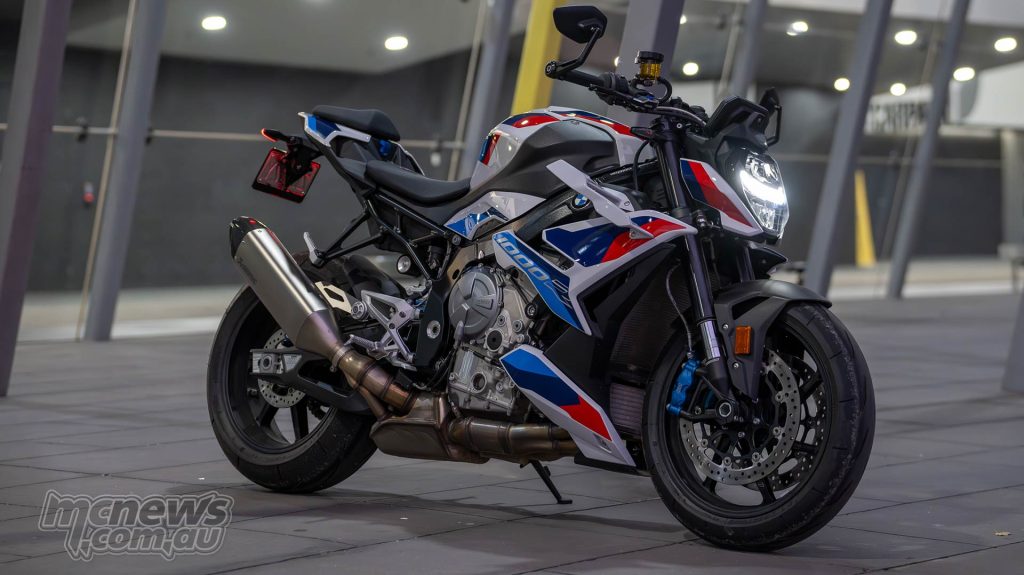
First gear and as expected the traction control warning flashes up on the dash. I can’t feel it interrupting forward momentum though, all I feel is acceleration. Second gear, third – as quick as I can react. The dash is still going bananas and it feels like we’re accelerating faster with each gear-shift, not the reverse.
The M 1000 R is devouring gears as fast as I can feed it. By the time I snick sixth we’re seriously haulin’. And that TC dash light? It’s still flashing! In sixth! Jesus H. This thing isn’t messing around. I doubt I’ve ever felt more alive. Every fibre of my being is on alert status.
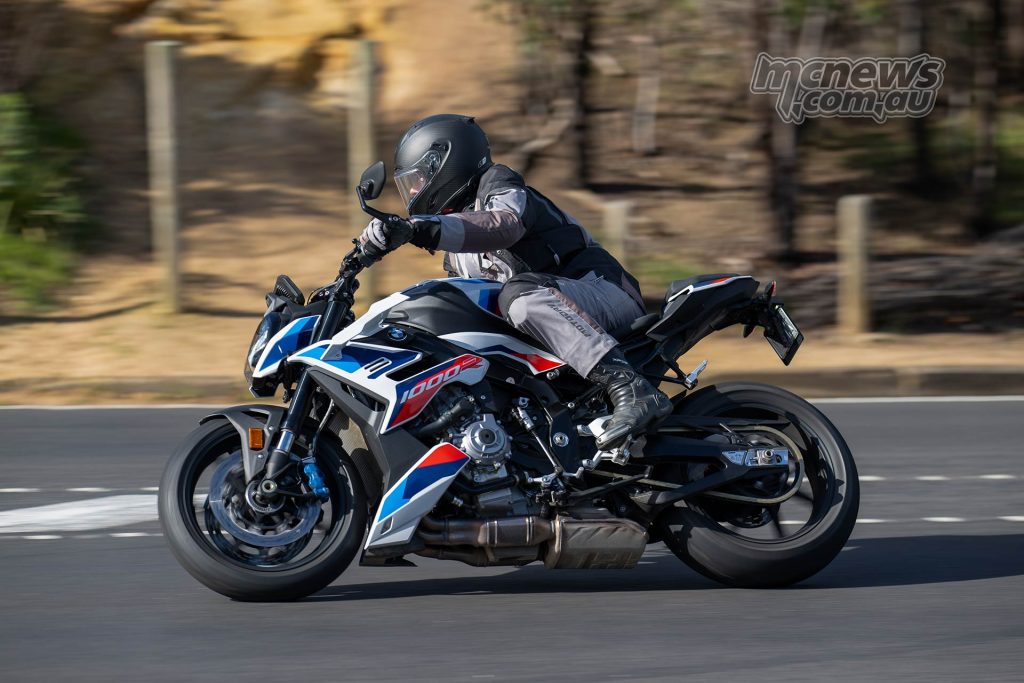
Could be the shorter internal gearing of the top three gears compared to the ‘normal’ S 1000 R sibling or the extra couple of teeth on the rear sprocket. Or both. But I don’t think I’ve ever ridden a bike that accelerates like The M 1000 R does. It’s not an assault on the senses in the sense of it being out of control or frightening. It’s just… bloody fast. Phenomenally so.
While I used to ride and race sports bikes, it’s been a few years since I’ve had 180+ hp on tap every day. And I admit to having generous helpings of both excitement and caution as I hit the start button for that aforementioned first cold morning ride.
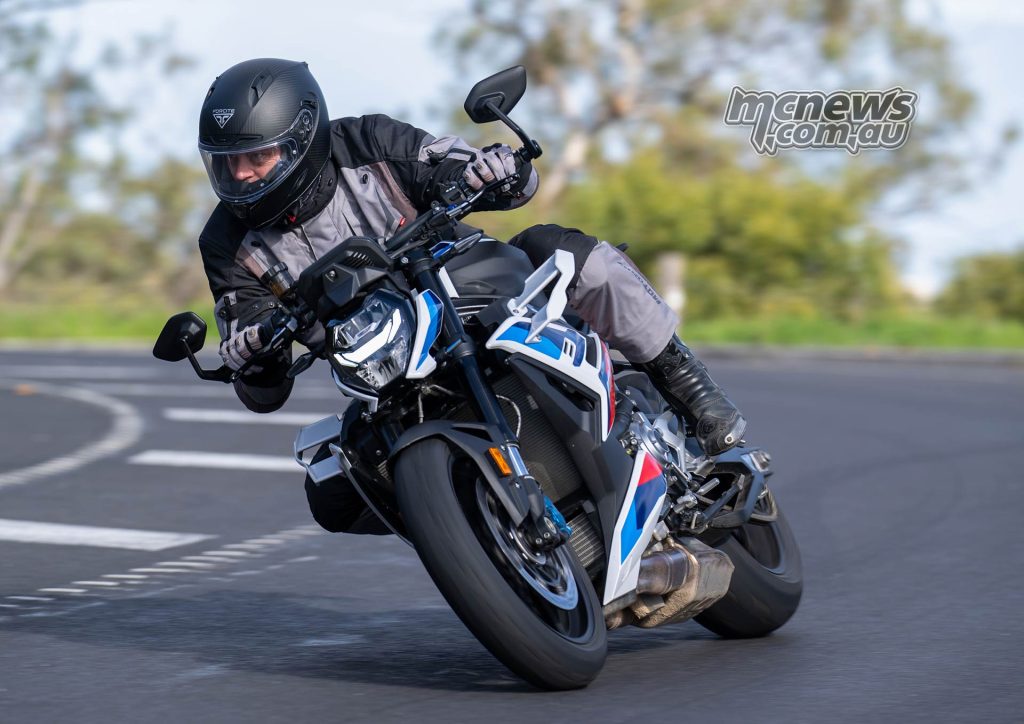
As the bike erupted into life with a snarl, I actually let out an involuntary noise. Halfway between a Tim-the-Toolman ‘ergh ergh ergh’ and a maniacal laugh. Sounds proper racey jumping to a high idle before settling back down again to a menacing rhythm. There’s no doubting this bike means business and that there’s over 200 ponies ready to burst forth.
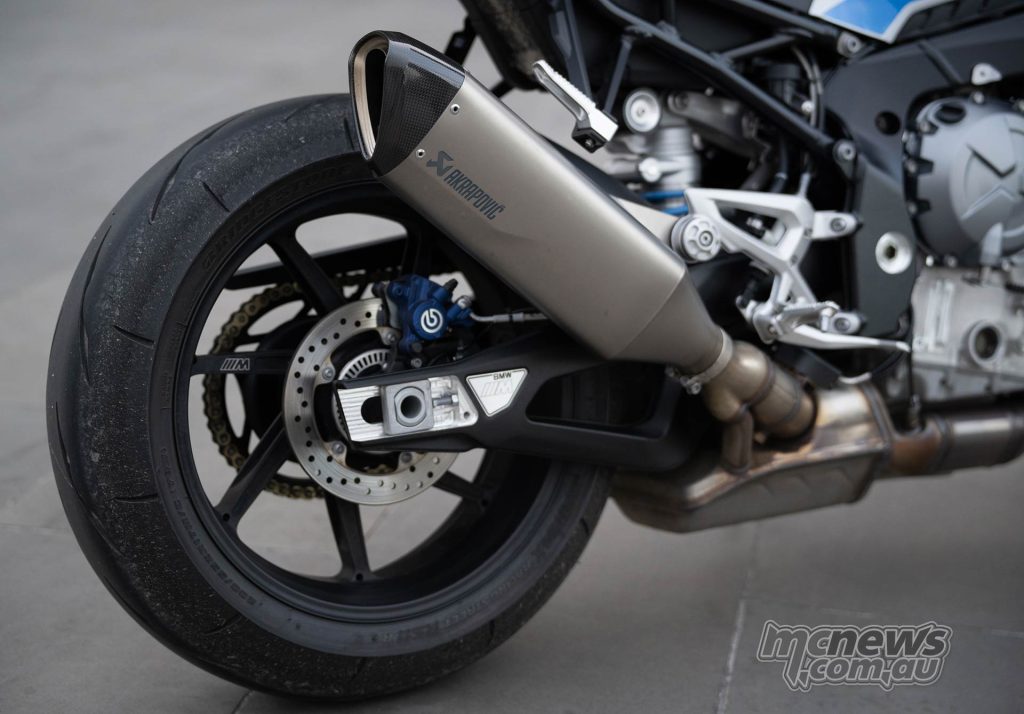
Now, when I put it out there to the masses as to what they wanted to know about the bike, the most common response was simply, ‘Why’? And I’ll admit I was somewhat in that camp to begin with.
I mean, do you really need 210 horsepower in an unfaired streetbike? We know the answer of course. But then, if we all had only what we needed then the most if us would probably be driving Toyota Camrys. And what a boring place that would be.
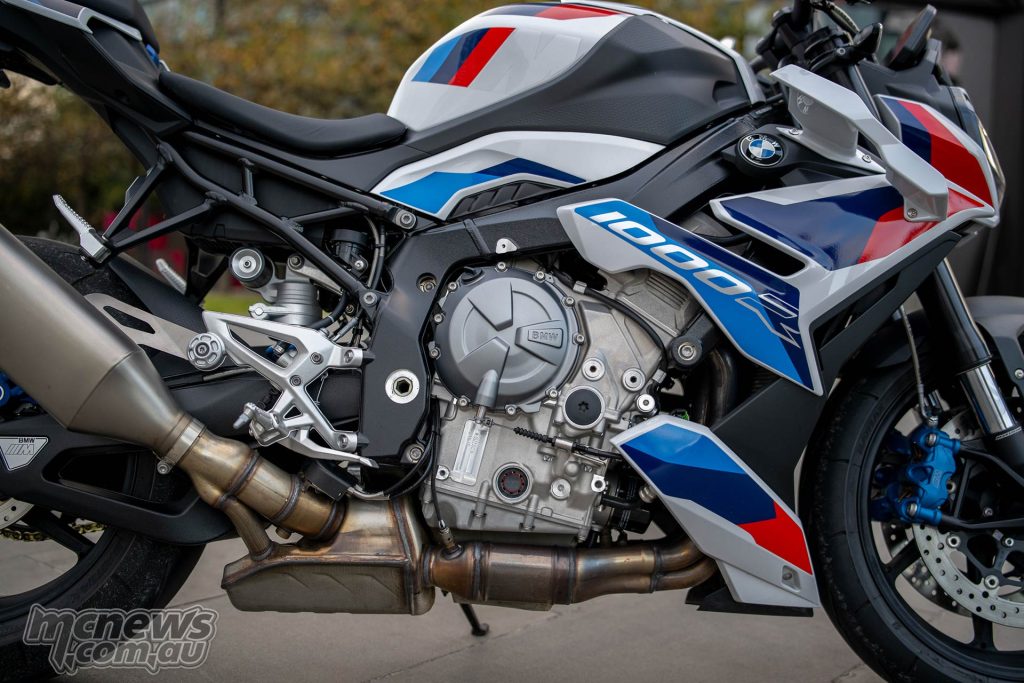
In a lot of ways this is the bike that punters wanted when BMW first launched the S 1000 R with a detuned output of a little over 160 ponies. Lovely roadbike I’m told and I don’t doubt it. But enough people (thankfully) kept banging on about giving it the full fruit that the crazy engineers at BM double-V relented.
And I’m glad they did. I know it’s only July, but I think we have a contender for my bike of the year. This thing is an engineering masterpiece. It’s just extraordinary. I might need a thesaurus for this one – I’m at risk of running out of superlatives.
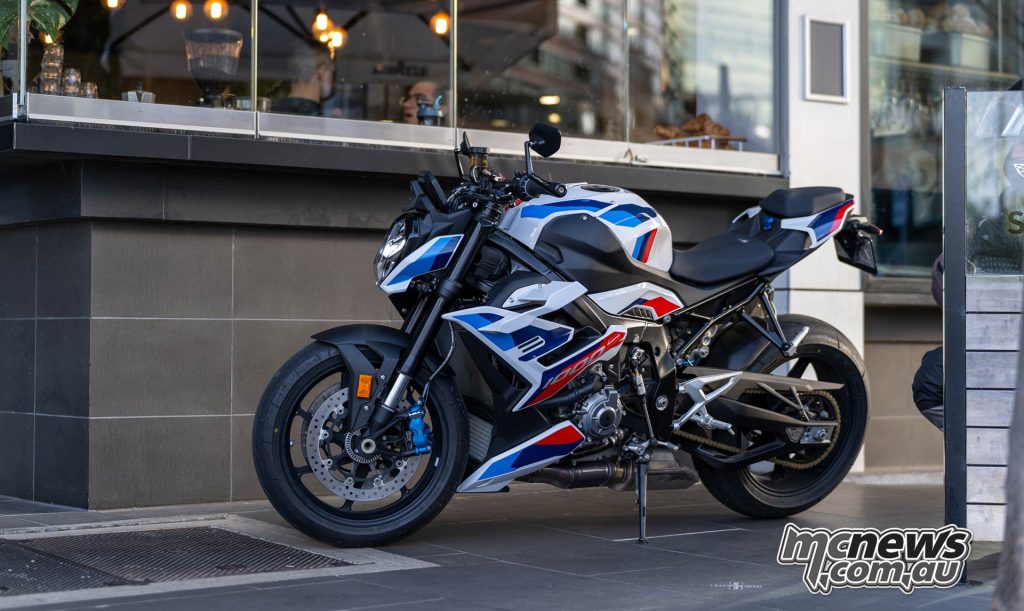
Like the ‘S’, the M has a totally usable and comfortable riding position. It’s not particularly weighty on the wrists, just a little core activation needed. The steering feels a touch over-damped when you’re pushing it around at standstill, but everything makes sense as soon as you start moving.
Lovely wide bars with quite a direct steering angle make for a lovely thing to cruise around town on. It’s incredibly well balanced and well behaved at low speed. Clutch is really, really nice. But the engine is sublime.
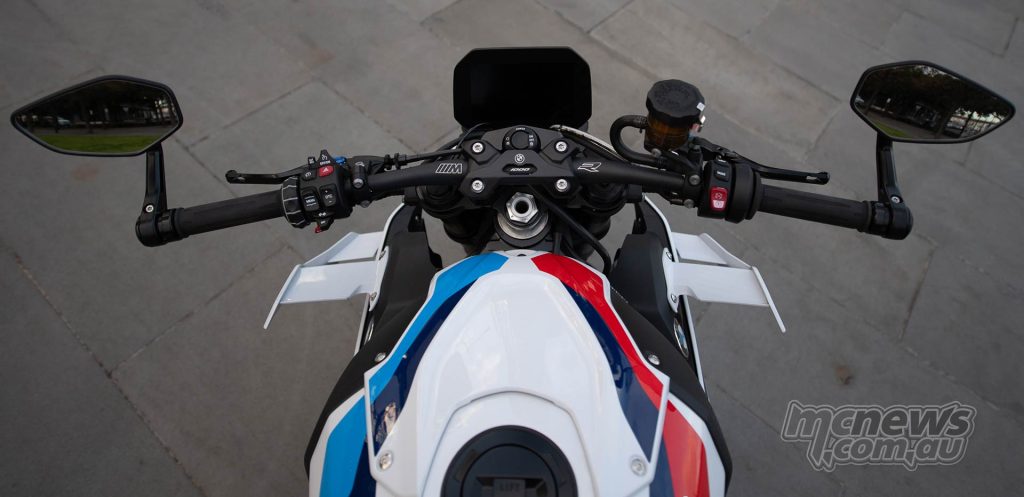
On the one hand, it’s absolutely mental. Mental. 210 horsepower. In a street bike. With no front screen. With not particularly great fuel tank range (you’ll be looking for fuel at 200 km). But then I find myself after three days of commuting, thinking to myself ‘I could totally have one of these, It’s utterly friendly, everywhere’. The fact that it straddles both ends of the spectrum and is so damn usable blows my teeny mind.
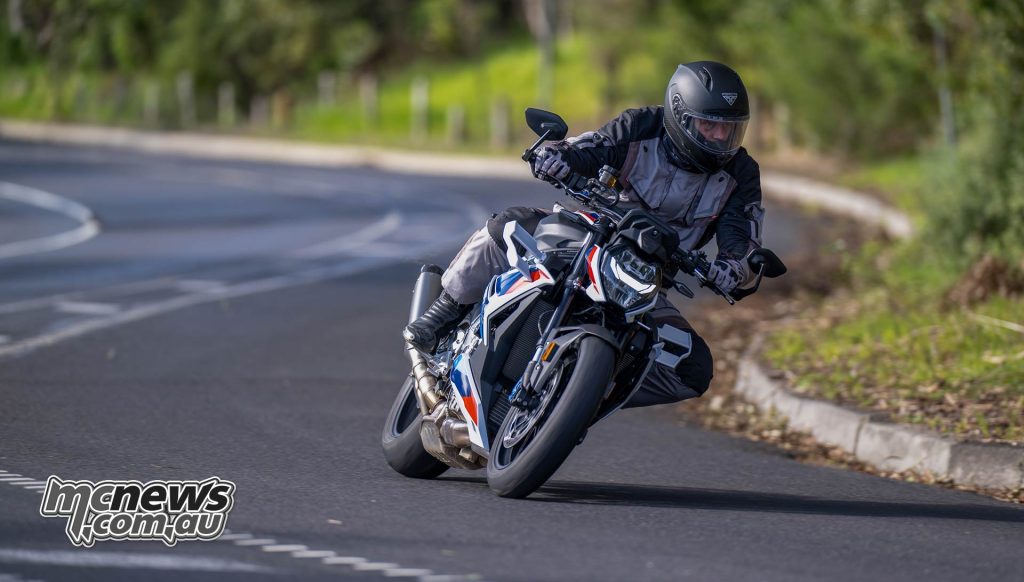
That Shift-Cam technology, that effectively alters the Cam timing as the revs rise, is nothing short of incredible in keeping the engine right where it needs to be. At one point when out riding I was cruising through some roadworks at 40 km. On a slight uphill. In fifth gear at two thousand revs. And it didn’t raise a sweat.
As in the bike felt totally, totally comfortable and didn’t feel like it was lugging at all. Let that sink in for a second. This is an engine that punts out 210 horsepower, but will happily dawdle along at barely over idle. It is preposterously flexible.
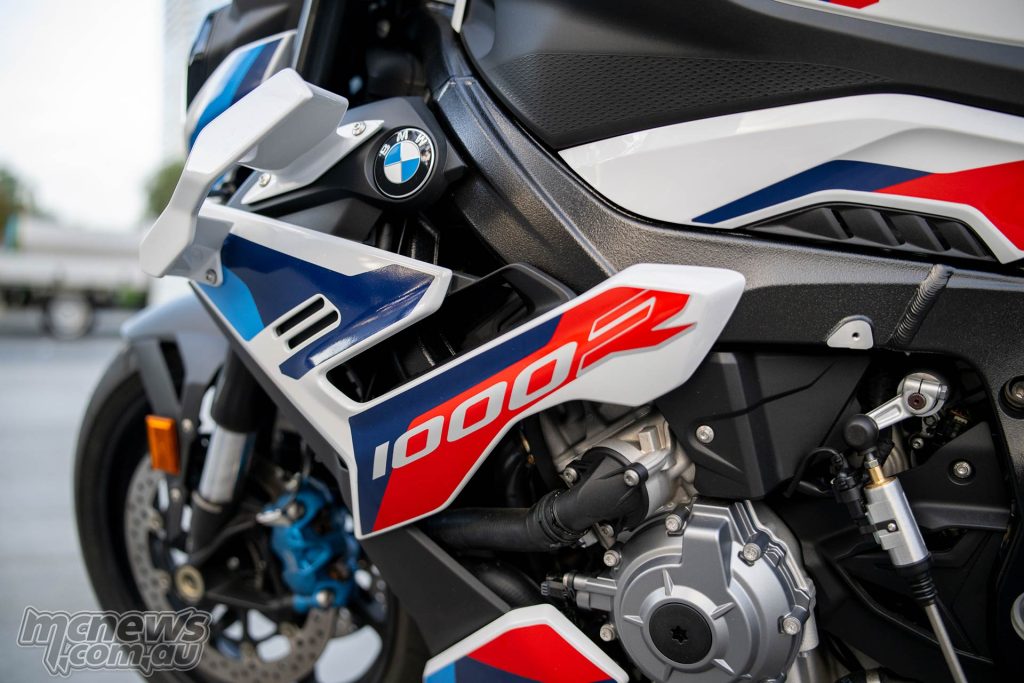
And my next favourite bit. That quick-shifter. Barely hesitates or even snicks. It’s so smooth at almost all revs and throttle openings – in both directions – it’s almost like a dual-clutch. The revs just drop and it’s nearly a seamless shove forward. I said the Ducati Multistrada V4 had the best quick-shifter I’d tested when I rode it – and it was. Then. It’s lost the crown.
The M shifter is nothing short of superb. The electronics seemingly cutting just the right amount of forward thrust to smooth all shifts out in a way that I’m yet to feel anything else come close to.
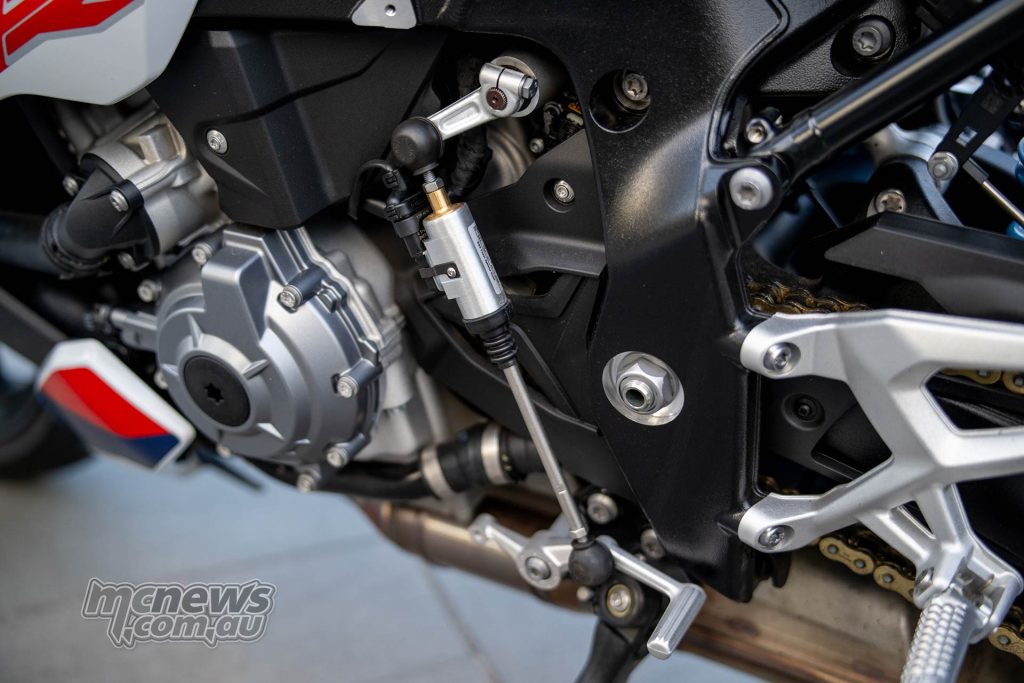
The M swaps out the S’s front Hayes brake for BMW branded Nissin hardware while opting for a Brembo on the rear. Neither end was found wanting by me, with the rear having a particularly nice feel for slow traffic manoeuvring. No issues there at all.
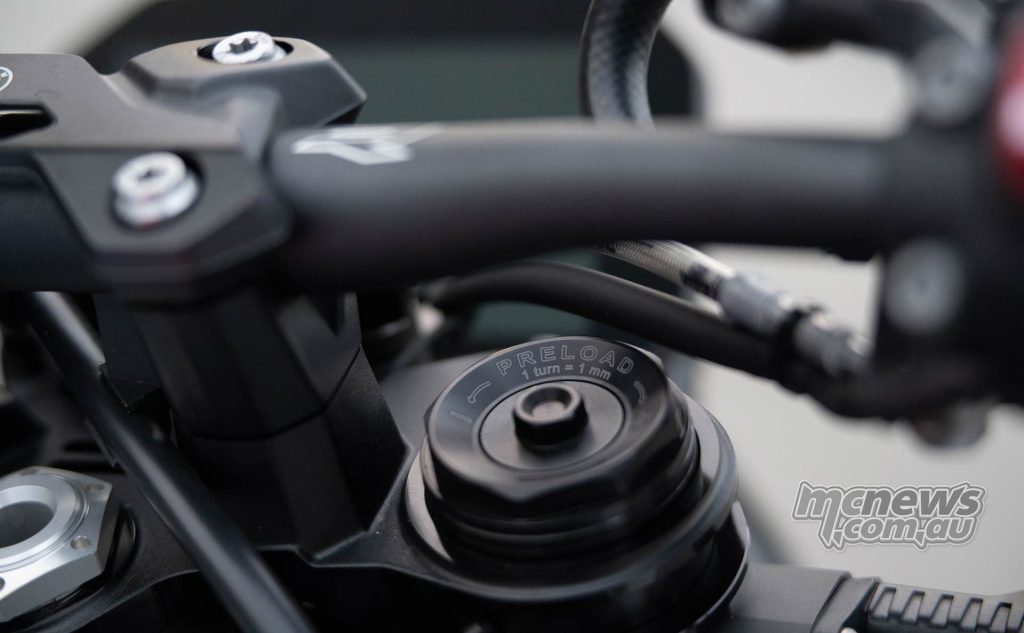
Suspension-wise it comes of course with fancy 45 mm USD Marzocchis with electronically adjustable damping and a bunch of modes. All the way from Rain through Road and Dynamic, to Race and Race Pro which allows fine tuning of traction and wheelie control. Yeah baby.
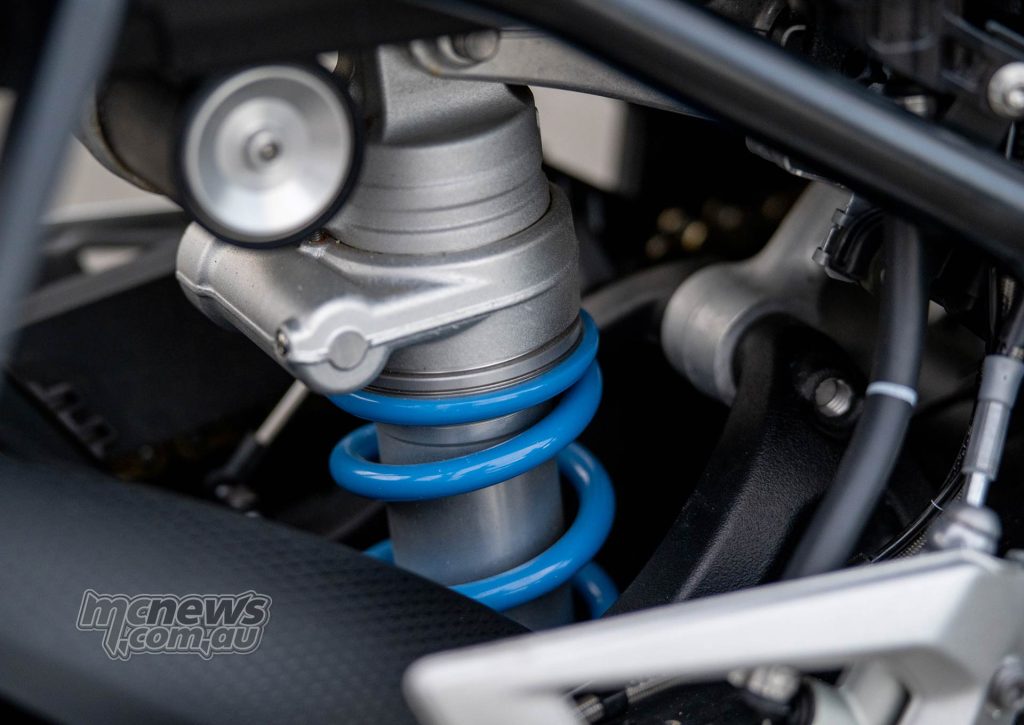
It also comes with a rather trick Sports mode dash layout – though I must admit I do quite like the regular Beemer dash layout – it’s about as good as they get.
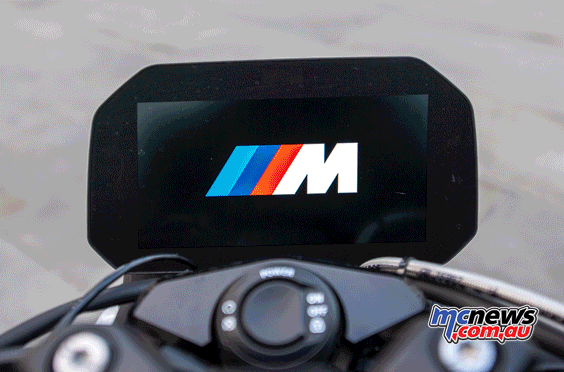
Electronic controls wise there was some initial frustration when I couldn’t figure out how to turn off TC (pressing didn’t work – needed to be pressed and held), or adjust the suspension settings within BMW’s preset modes. The same issue I had with the big GS incidentally.
Turns out the suspension settings are hidden under a label called ‘Assist’. Which unsurprisingly, I hadn’t been looking in.. Wonder if that’s a German-English thing. Anyway, I know where it is now. Wonder if it’s in the same spot on the GS…
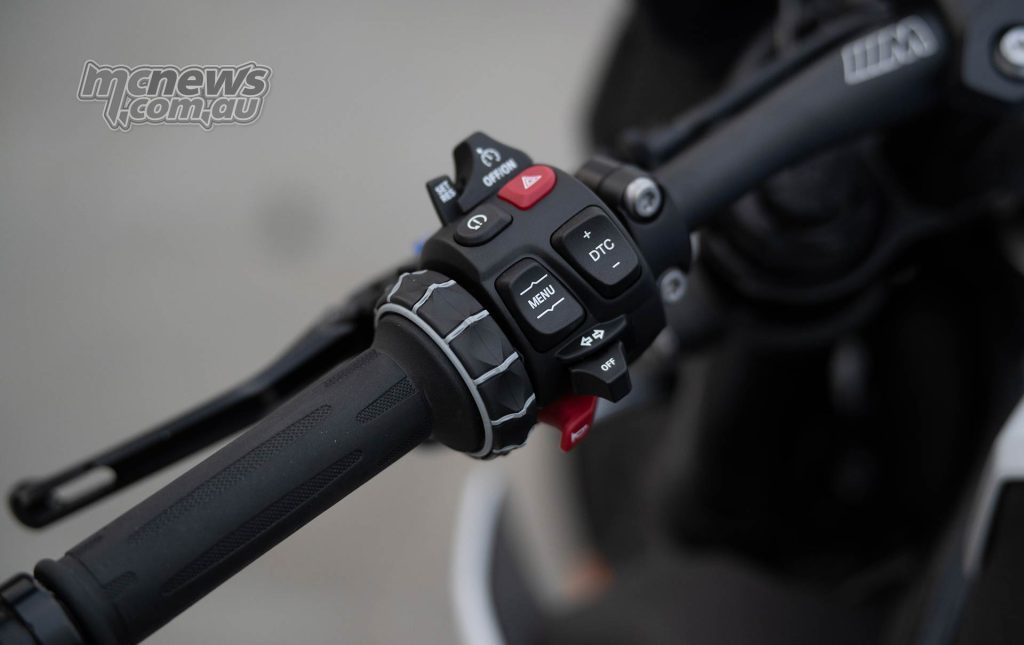
Personally I found Road mode to be spot on for soaking up our normal rough road nonsense and once I figured out that the Traction Control button needs to be pressed and held to turn off… I was a happy camper. Also… when I found how to adjust the Race Pro mode suspension back to road settings that became my goldilocks. I preferred the throttle map in Race Pro mode for when I was in a mood for shenanigans. And the racey burbles under deceleration were an added delight. Yes please.
Speaking of shenanigans, yes. It will wheelie for days. We had a little more traffic and attention around during the shoot day than I liked, so you’ll just have to take my word for it. But Race-Pro throttle and TC off makes wheelie’s absolute child’s play.
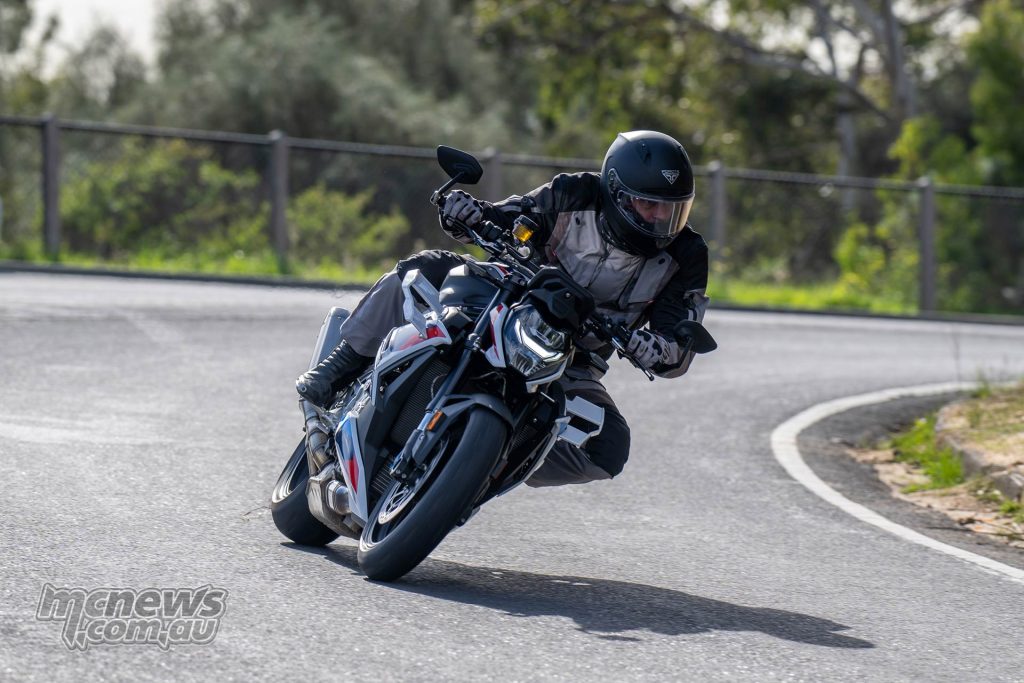
Other than the electronic user interface, the only thing I found to be less than excellent was those funky bar end mirrors. They look trick and work nicely at urban speeds, but once on the highway the bars do buzz a little and the mirror picture vibrates and blurs enough that you aren’t able to clearly see what exactly it is behind you. You know there’s something there, but not exactly what.
And the winglets? I’m not fully sold. Yes they look menacing. And do add a measured 11 kg of downforce at speed meaning less wheelies, more speed and heavier braking ability. However, and I could have been imagining it, but it felt like it potentially caught more crosswind than without them. And I dunno if I’m necessarily anti-wheelies… So I wonder if I’d end up unscrewing them. Possibly not. But there you have it.
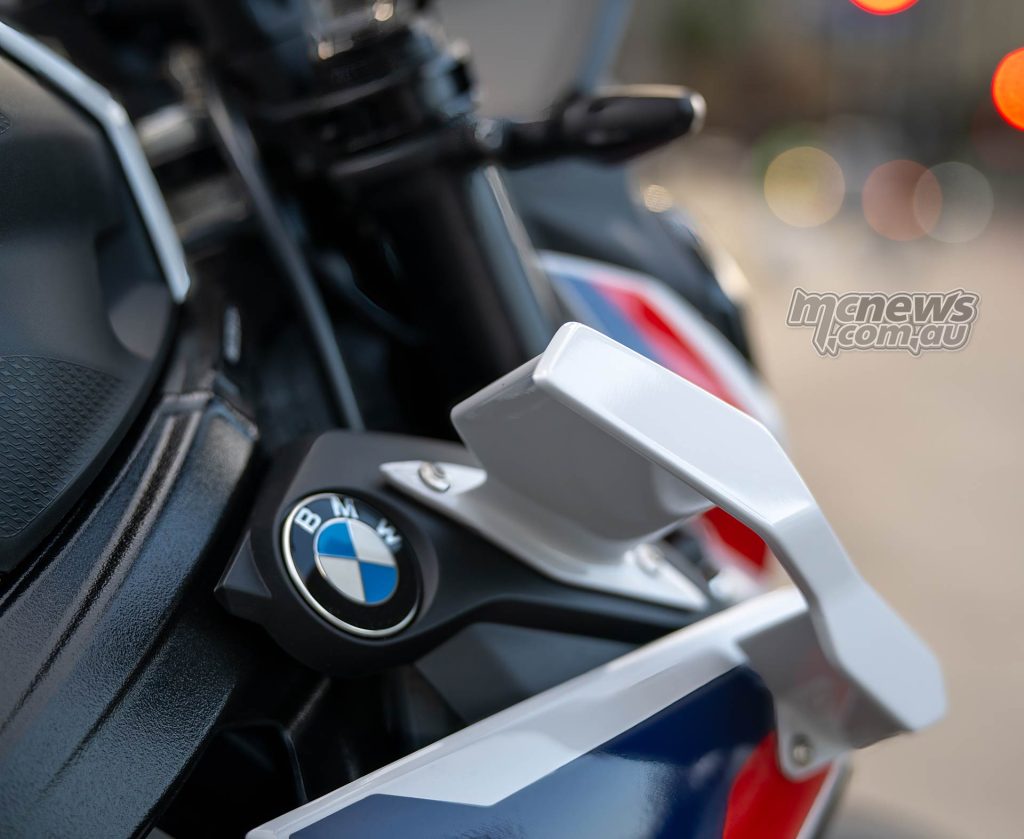
Other than those few very minor things there really isn’t a lot to pick fault with.
At the risk of harping on about it, I do need to talk about that engine for a little more to try and convey just how monstrously it accelerates. 0-100 comes around in 3 seconds. Fast enough, sure. But 100-200 takes only a further 4.3 seconds. That’s… Well it’s not much more is it. The 0-200 takes around 7.5 seconds, and it is a doddle to do. The acceleration of the M is relentless. Top gear roll-ons are mind boggling.
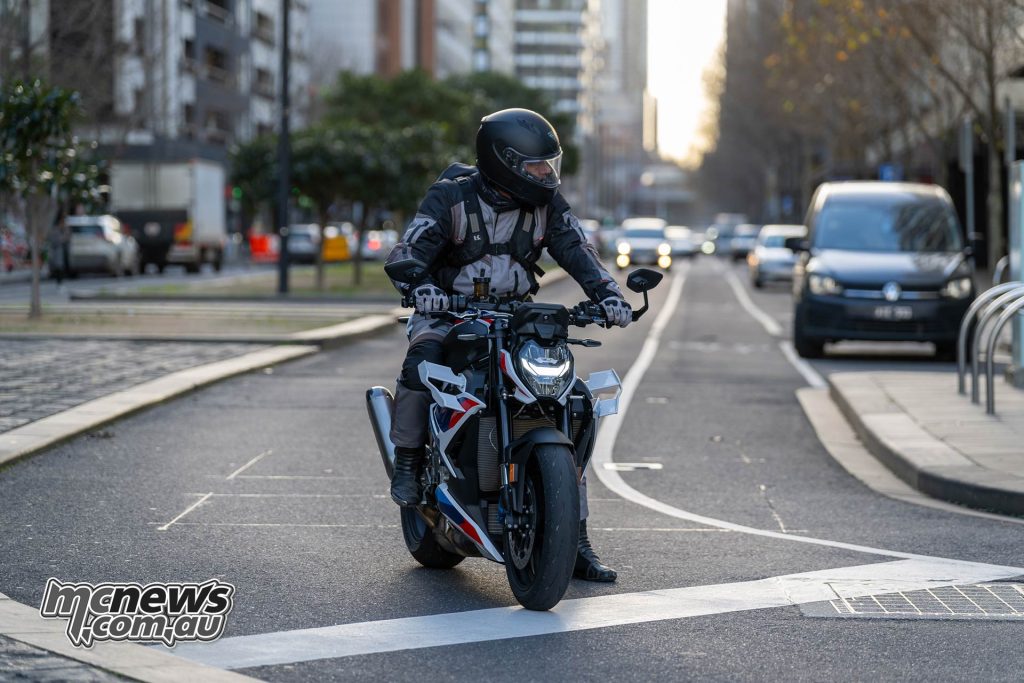
Some perspective. While it’s not a direct comparison to another bike, let’s say you found yourself lined up against a reasonably quick road car. I’ve got a thing for Hemis at the moment, so let’s pick a late model Chrysler 300c SRT.
0-100 in 4.8 isn’t bad for a chunky car. Only a little over a second behind the M. The 100-200? Around the 12.7 second mark. So if you both hit the go juice around the same time, you’re not just walking away, it’s 3.9 seconds versus 12.7. That’s not a gap, that’s a postcode. A demolition.
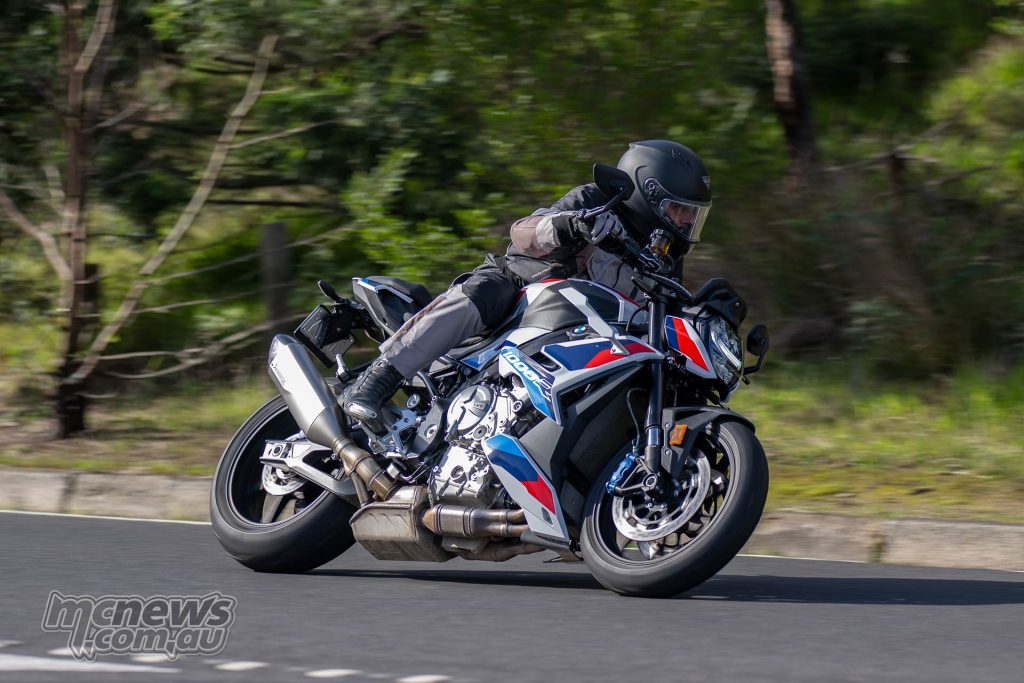
Of course the downside to all of this mind bending performance is that now everything else feels more than a little underwhelming. I jumped back in my own Hemi powered land barge today and floored it. For a good few seconds I was seriously wondering if there was a problem. Sounded fine, but just didn’t seem to be pulling that hard… funny that.
Going back to the original question of ‘why?’ Maybe I’m a glass half full guy, but I can’t help but ask, ‘Why not?’ A genuinely comfortable do-it-all bike that’s as happy around town as it is chasing sportsbikes when the mood takes you. The only issue I’d have would be licence preservation.
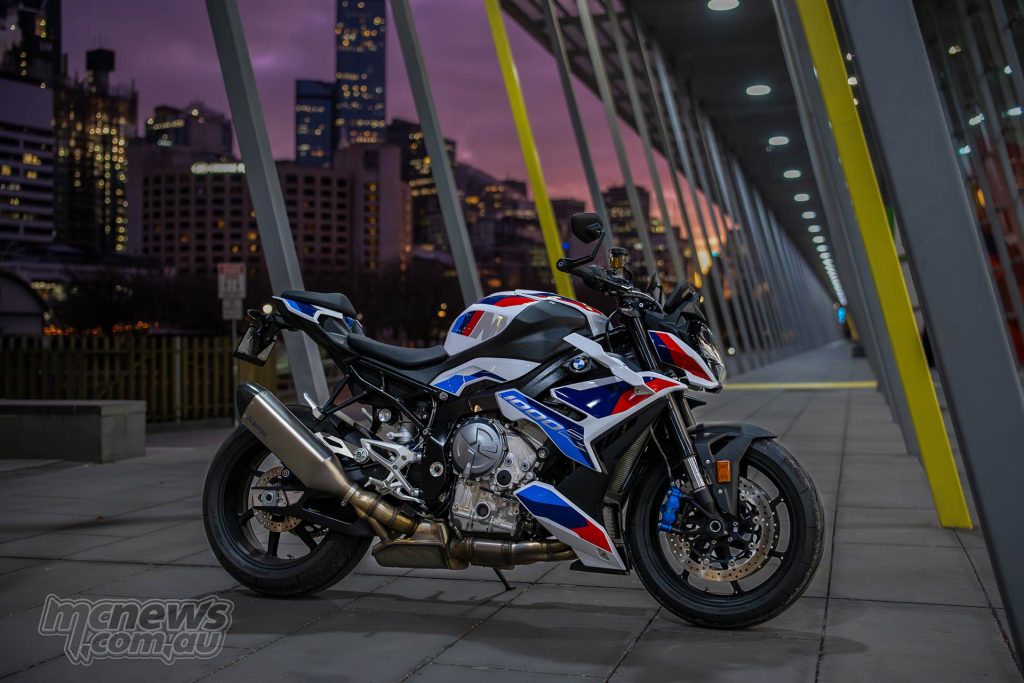
At one point mid-ride I was fuelling up down the Great Ocean Road and came across a nice shiny new KTM 1290 Superduke R at the servo. My love for those is well documented, but I found myself looking at it, then back at the M. Then back at the Duke. Then back at the M…
I was perfectly happy to ride away on the Beemer. It’s a masterpiece. What a bike.
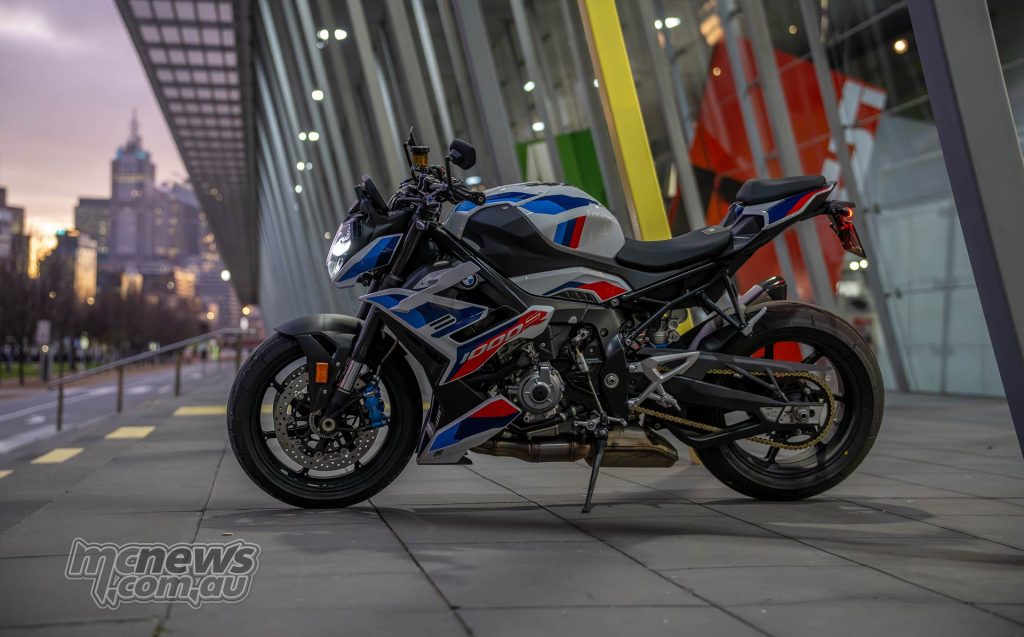
I like the M 1000 R because:
- That engine. It’s power is only matched by its remarkable manners and flexibility
- Arguably the best quick-shifter on any bike I’ve ever tested
- All in a perfectly user friendly and comfortable package
I’d like the M 1000 R more if:
- The electronic controls for both damping and traction control could be more intuitive
- Those funky looking bar end mirrors could buzz less at highway speeds
- It could be in my shed…
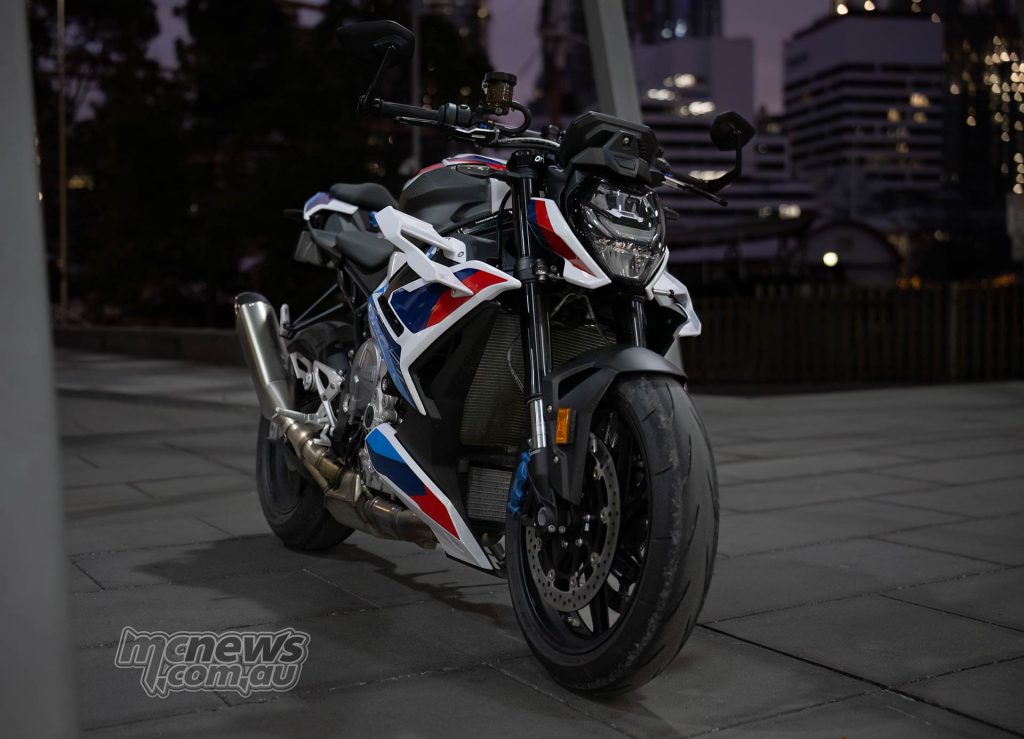
2023 BMW M 1000 R Specifications
| BMW M 1000 R Specifications | |
| Engine | |
| Capacity | 999 cc |
| Bore/stroke | 80/49.7 mm |
| Output | 154/210 |
| at engine speed | 13750 rpm |
| Torque | 113 Nm |
| at engine speed | 11,000 rpm |
| Type | Water-cooled in-line 4-cylinder engine |
| Compression/fuel | 13.3:1 / Premium unleaded petrol, octane rating 95-98 (RON) (knock control; rated power at 98 RON) |
| Valve/accelerator actuation | DOHC (double overhead camshaft), Valve actuation via single-cam followers |
| Valves per cylinder | 4 |
| Ø intake/outlet | 33.5/27.2 mm |
| Throttle valve diameter | 48mm |
| Engine control | BMS-O |
| Emission control | Closed-loop three-way catalytic converter |
| Electrical system | |
| Alternator | 493 W |
| Battery | Battery 12/5, maintenance-free V/Ah |
| Headlamp | Full LED headlamp |
| Starter | 0.8 kW |
| Transmission | |
| Clutch | Self-reinforcing multi-plate anti-hopping oil bath clutch, mechanically operated |
| Gearbox | Constant-mesh 6-speed gearbox |
| Primary ratio | 1.652 |
| I | 2.647 |
| II | 2.091 |
| III | 1.727 |
| IV | 1.500 |
| V | 1.360 |
| VI | 1.261 |
| Rear wheel drive | Chain |
| Secondary ratio | 2.765 |
| Suspension | |
| Frame construction type | Aluminium composite bridge frame, engine self-supporting |
| Front wheel suspension | Upside-down telescopic fork, sliding tube diameter 45 mm, |
| Rear wheel suspension | Aluminium double-sided swinging arm with central sprint strut and Full Floater Pro kinematics BMW M 1000 R |
| Suspension travel, front/rear | 120/117 mm |
| Wheel castor | 96.3 mm |
| Wheelbase | 1,450 mm |
| Steering head angle | 66° |
| Brakes | Front: M double disc brake, floating, Ø 320 mm, radial four-piston fixed callipers |
| Rear: M single-disc brake, Ø 220 mm, single-piston floating calliper | |
| ABS | BMW Motorrad ABS Pro (part-integral) |
| Traction control | BMW Motorrad DTC |
| Wheel Type | Standard: aluminium forged wheels |
| M Carbon wheels in conjunction with M Competition Package | |
| Wheel Size | Front – 3.50 x 17″ |
| Rear – 6.00 x 17″ | |
| Tyres | Front – 120/70 ZR17 |
| Rear – 200/55 ZR17 | |
| Dimensions and weights | |
| Total length | 2,090 mm |
| Total width with mirrors | 812 mm |
| Seat height | 840 mm |
| DIN unladen weight, fully fuelled | 199 kg |
| Permitted total weight | 407 kg |
| Fuel tank capacity | 16.5 l |
| Performance figures | |
| Fuel consumption (WMTC) | 6.4l/100 km |
| CO2 | 144g/km |
| 0-100 km/h | 3.2 s |
| Top speed | 280 km/h |
2023 BMW M 1000 R

























































